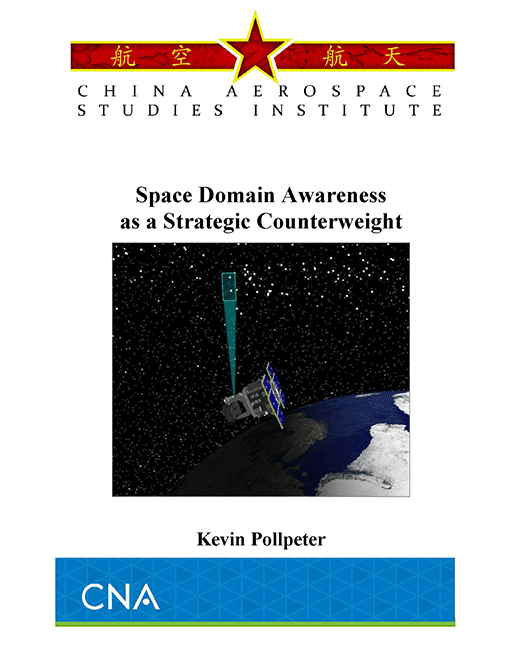This paper examines the role of space domain awareness (SDA) as a strategic counterweight to potential adversary and competitor actions in space. It argues that awareness of the space environment is fundamental to maintaining and protecting U.S. interests in outer space. The U.S., however, has been slow in developing a SDA capability and must now hasten the transition from a more passive peacetime capability to a system that can provide commanders with timely knowledge to predict adversary actions in potentially hostile environments.
Key findings
This study finds that effective SDA can be a strategic counterweight to possible adversary and competitor actions in space in five ways:
- SDA enhances deterrence and reduces inadvertent escalation. During peacetime, effective SDA can provide real-time situational awareness that can help deter gray zone activities against U.S. military and commercial interests. During a crisis or prelude to war, DA can identify mobilization activities related to space, such as prepositioning satellites in certain orbits and deploying counterspace capabilities. During war, SDA can better inform decisions to escalate by determining whether an attack is limited or all out.
- SDA enables warfighting. SDA is fundamental to establishing an effective sensor-to shooter kill chain. SDA allows commanders to determine friendly and hostile actions within actionable timeframes. In the event of an attack, it allows commanders to determine whether to take passive or active countermeasures to defend space assets.
- SDA can help develop and protect norms and regulations for space activity. The governance of outer space remains largely undeveloped. Laying the groundwork for the establishment of widely agreed-upon norms and laws, and subsequent enforcement measures, requires an understanding of the activities taking place in outer space so that norms can be identified, their effects analyzed, and their compliance monitored.
- SDA can help maintain space sustainability. Orbital debris remains a major concern affecting the sustainability of space. Increased SDA capabilities will bring improved understanding of the collision threat and the necessity to deconflict orbits to ensure the sustainability of the space environment for long-term use.
- SDA can enhance the U.S.’s influence and role in space. Maintaining space sustainability through improved SDA capabilities could enhance the global reputation of the U.S. by allowing it to continue its role as the primary source of information on space activities, and solidify its position as the provider of “common goods” in space for allies and partners in a military context and for other countries in a civilian context.
Limited Print and Electronic Distribution Rights
Reproduction and printing is subject to the Copyright Act of 1976 and applicable treaties of the United States. This document and trademark(s) contained herein are protected by law.
This publication is provided for noncommercial use only. Unauthorized posting of this publication online is prohibited.
Permission is given to duplicate this document for personal, academic, or governmental use only, as long as it is unaltered and complete however, it is requested that reproductions credit the author and China Aerospace Studies Institute (CASI).
Permission is required from the China Aerospace Studies Institute to reproduce, or reuse in another form, any of its research documents for commercial use.
For information on reprint and linking permissions, please contact the China Aerospace Studies Institute.
Cleared for Public Release, Distribution unlimited.
Details
- Pages: 13
- Document Number:
- Publication Date: 11/17/2021
